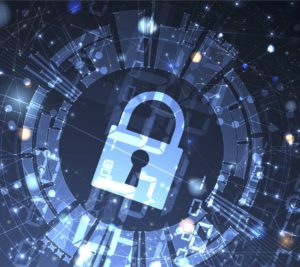3 common cyber security questions we get asked!
Curious as to the 3 common cyber security questions we get asked?
Laminar are experts in implementing IT cyber security infrastructure. The three key areas we assess are:
- Detection and response
- Identification and Isolation
- Authentication and Authorisation
A secure infrastructure is crucial for protecting you, your business, your employees, and your data. Therefore, it is essential you understand even the basics of cyber security and why it matters.
To get you clued up, we cover the basics of cyber security and answer the 3 most common cyber security questions we get asked. So, to learn more, read on.
What is cyber security, and why does it matter?
Cyber security is the term given to the application of technologies and processes put in place to defend technological networks, devices, data, and programs from malicious cyber-attacks. This is done by anticipating, defending, and responding against cyber threats and breaches and is a crucial task carried out by specialists in the field.
As you may have gathered, cyber security is essential because it protects sensitive data from theft and damage, including:
- Personally identifiable information
- Healthcare information
- Government information
- Sensitive personal information
- Confidential industry information
With the increasing demand, usage, and growth in technology, hacking, ransomware, and cyber terrorism are on the rise, making cyber security an even more essential practice to have in place.

Common cyber security questions and answers
So, now you know the very core of cyber security, you may be wondering, what questions should I be asking about cyber security? Well, to get you started, here are three of the most common questions we get asked.
1. What is cryptography?
Simply put, cryptography is communicating in secure, hidden code language. It’s a little bit like in The Da Vinci Code, where the answer is hidden within a cryptex, however in the world of IT, it’s not quite the same. Instead, now it is used to protect digital data by encrypting data from plain text with other characters such as numbers for secure communication.
2. How does encryption work to protect my data?
So, we’ve briefly touched on encryption above, but you might still be questioning how it works to protect your data.
As we’ve covered, encryption uses a series of numbers for secure communication. Each number is unique and created using a set of rules. These rules, also known as algorithms, turn readable data into scrambled text, which requires a unique decryption key to unscramble the coded information into readable data.
There are two types of encryption systems:
- Symmetrical encryption – this uses a single password to both encrypt and decrypt data.
- Asymmetrical encryption – this requires two keys – a public key for encryption that may be shared amongst key personnel and a private key for decryption that is not shared.
It’s essential to encrypt your data. After all, you do not want hackers to know everything about your health and other private matters.
3. What are the main differences between IDS and IPS?
You’ve likely come across these terms at some point. But if you’re unsure of what they mean and, what the differences are, we’ve got the answers for you.
- Intrusion Detection System (IDS) – monitors and alerts you of an impending cyber threat.
- Intrusion Prevention System (IPS) – takes action to block any attempted threatful intrusion.
Together, they make a unified cyber threat management system crucial for network security.
Ask Laminar about Australian cyber security
Whether personal or professional, you must maintain good cyber security practices. While all individuals and businesses will have unique circumstances, you must assess your network security and include the following three questions on your cyber security checklist:
Do you have:
- Secure access for guests, BYOD, and corporate devices?
- Proactive control over access privileges?
- The full spectrum of visibility into your network?
At Laminar, we have been working with our clients on designing, building, and operating cyber security infrastructure. Traditionally we work with the information technology team. We still do, however, with the increasing profile of risks that many organisations face, we are finding that we are increasingly working with owners and boards or assisting the IT team.
We encourage you to ask questions and regularly analyse your cyber security needs. So, if you’ve got any questions you would like answered, call our team on 1300 486 373 or visit us here and start defending your castle today!
